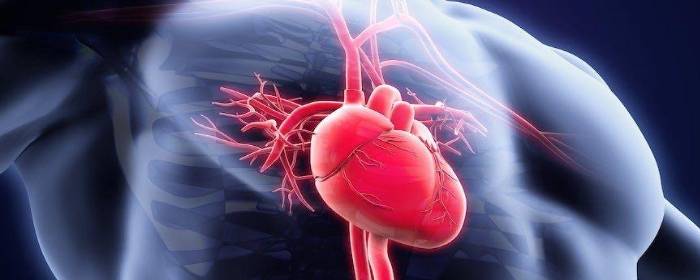
by admin | Sep 10, 2020 | Heart Failure, Health Awareness
Whether you’re living with heart disease, actively trying to prevent it, or just seeking ways to boost your overall wellness, there are many habits you can adopt to improve your cardiovascular health. Oftentimes, however, an extensive lifestyle overhaul can feel daunting. While completely revamping your diet or embarking on a new fitness journey can indeed be overwhelming, there are smaller steps you can take that can still have a big impact on heart health.
By implementing these small changes one by one, you may find that the path to a healthier lifestyle is well within reach.
Get Lifting
Lifting small hand weights can help build muscle, which contributes to overall health. Once your weights get too light, move up to a heavier set.
Choose nuts as a healthy snack.
Nuts are filling but rich in nutrients. Next time you’re hungry between meals, reach for peanuts, almonds, or walnuts for your heart health. You can also incorporate them into salads.
Add one fruit or veggie a day.
Instead of focusing on what you should eliminate from your diet, think instead about the healthy choices you can add-in. Aim for an additional serving of vegetables or fruit each day until you’re having them with most meals. You’ll likely make fewer unhealthy choices as a natural result.
Walk for 10 minutes.
A quick walk is a simple, manageable goal you can get started on right away. As you build up endurance, increase the time by five-minute intervals until you’re walking 30 minutes per day, most days of the week.
Cut out caloric beverages.
Beverages other than water often have extra calories, sugars, and other additives which can impact your health and lead to weight gain. When possible, choose water to keep your diet in check. If you’re craving flavor, add a slice of lemon.
Have a good breakfast.
Start with a nutritional meal and you may find yourself more inclined to make healthy choices for the rest of the day. Aim to include a good source of protein, such as eggs or yogurt, so you’re full and less likely to snack before lunch.
Swap out red meat for seafood.
While you may choose to have red meat in moderation, seafood is a far better nutritional choice. Try to incorporate fish into your meals once per week to boost brain and heart health.
Try deep breathing.
High blood pressure is a major heart health concern. Deep breathing may help to keep you calm in stressful situations, which could contribute to lower blood pressure.
Wash your hands frequently.
Infections such as seasonal flu and other viruses can take their toll on heart health. Minimize your risk of infection by washing your hands frequently, and especially before eating or touching your face.
Practice gratitude.
Positive emotions such as gratitude have been linked to better overall wellness and longevity. To evoke more feelings of appreciation and fulfillment, start and end each day by reflecting on what it is you have to be grateful for.
For more helpful health awareness blogs, please visit stemedix.com/blog.

by admin | Nov 15, 2019 | Adipose, Heart Failure, Mesenchymal Stem Cells, Stem Cell Research, Stem Cell Therapy
A myocardial infarction, commonly known as a heart attack, occurs when blood flow through the coronary arteries is blocked. A heart attack usually happens to people with atherosclerotic coronary heart disease, which narrows one or more of the coronary arteries. A blood clot becomes lodged in the narrowed artery, preventing blood from reaching the heart muscle. Because the heart needs a virtually constant supply of oxygen-rich blood to survive, an interruption in blood flow to the heart can quickly cause muscle cells to die. There has been much talk in the medical community of using stem cells to rebuild the heart after a heart attack.
Dead heart muscle cells cannot help the heart pump blood. Thus, people who suffer a heart attack are often left with “weak” hearts. Instead of strongly squeezing blood out of the heart to the rest of the body, a larger portion of the blood remains in the heart (i.e. reduced ejection fraction). People who have had a heart attack that reduces ejection fraction commonly develop a condition known as congestive heart failure.
People with congestive heart failure often have difficult lives. Congestive heart failure patients periodically experience exacerbations that require hospitalization. They are put on restrictive diets; their salt and fluid intakes are limited. They must also take several different medications to help the heart pump blood through the arteries to the body and keep fluid levels in the body low. These medications do not heal or replace dead heart muscle cells. Instead, they make the remaining cells work harder (or decrease resistance in the arteries, or help the body eliminate fluid through urination).
What is needed is a way to regenerate dead heart muscle cells. Fortunately, several research groups are working on ways to use stem cells to regenerate heart muscle cells so that heart attack patients can regain heart muscle function.
There have been at least 11 clinical trials studying the effects of stem cells on patients with myocardial infarction. The trials show that stem cell infusion into the vein, the coronary artery, or the heart muscle itself is safe and well-tolerated by patients. Notably among the studies, patients with acute myocardial infarction who received allogeneic human mesenchymal cells intravenously had a better ejection fraction, better heart structure, and better lung function after six months than those who received a placebo. In the APOLLO trial, patients with acute myocardial infarction who received adipose-derived mesenchymal cells had half the dead heart muscle cells than those who received a placebo (i.e. lesion volume was 50% lower in treated patients).
Phase III clinical trials are considered definitive (pivotal) evidence of benefit. In phase III C-CURE trial, patients with heart failure due to coronary artery disease received autologous mesenchymal cells (i.e. their own cells, specially prepared). Treated patients enjoyed significantly increased ejection fraction (heart-pumping ability) and better functional capacity and quality of life. Other Phase II clinical trials (ADVANCE, CONCERT-CHF, TRIDENT, POSEIDON-DCM) are ongoing.
These results are welcome news for patients who suffer—or will one day suffer—from a heart attack, an event that happens in 735,000 Americans every year.
Reference: Golpanian, S. et al. (2016). Rebuilding the Damaged Heart: Mesenchymal Stem Cells, Cell-Based Therapy, and Engineered Heart Tissue. Physiological Reviews. 2016 Jul; 96(3): 1127–1168

by admin | Jan 27, 2019 | Exosomes, Heart Failure, Kidney Disease, Stem Cell Research, Stem Cell Therapy, Stroke, Umbilical Stem Cell
Tissue injury is common to many human diseases. Cirrhosis results in damaged, fibrotic liver tissue. Idiopathic pulmonary fibrosis and related lung diseases cause damage to lung tissue. A heart attack damages heart tissue, just as a stroke damages brain tissue. In some cases, such as minor tissue injury, the damaged tissue can repair itself. Over time, however, tissue damage becomes too great and the organ itself can fail. For example, long-standing cirrhosis can cause liver failure.
One area of active research is to find ways to protect tissue from injury or, if an injury occurs, to help the tissue repair itself before the damage becomes permanent and irreversible. Indeed, tissue repair is one of the main focuses of regenerative medicine. Likewise, one of the most promising approaches in the field of regenerative medicine is stem cell therapy. Researchers are learning that when it comes to protecting against tissue injury and promoting tissue repair, exosomes harvested from stem cells are perhaps the most attractive potential therapeutic.
Why are stem cell exosomes so promising? Exosomes are small packets of molecules that stem cells release to help the cells around them grow and flourish. While one could inject stem cells as a treatment for diseases (and they certainly do work for that purpose) it may be more effective in some cases to inject exosomes directly. So instead of relying on the stem cells to produce exosomes once they are injected into the body, stem cells can create substantial amounts of exosomes in the laboratory. Exosomes with desired properties could be concentrated and safely injected in large quantities, resulting in a potentially more potent treatment for the disease.
Indeed, researchers have shown that extracellular vesicles (exosomes and their cousins, microvesicles) can be collected from stem cells and used to treat a variety of tissue injuries in laboratory animals.
Just a few examples of this research:
- Exosomes from umbilical cord-derived mesenchymal stem cells were able to accelerate skin damage repair in rats who had suffered skin burns.
- Exosomes from the same type of stem cell protected the lungs and reduced lung blood pressure in mice with pulmonary hypertension.
- Exosomes from endothelial progenitor cells protected the kidney from damage caused by a lack of blood flow to the organ.
In this growing field of Regenerative Medicine, research is constant and building as new science evolves from stem cell studies. Researchers are closing in on the specific exosomes that may be helpful in treating human diseases caused by tissue injury.
Reference: Zhang et al. (2016). Focus on Extracellular Vesicles: Therapeutic Potential of Stem Cell-Derived Extracellular Vesicles. International Journal of Molecular Sciences. 2016 Feb; 17(2): 174.

by admin | Sep 27, 2018 | Heart Failure, Stem Cell Therapy
People with heart failure may have trouble breathing, walking, and having a normal life. Current treatments for heart failure are aimed at making the healthy heart tissue pump harder (e.g. digoxin). On the other hand, treatments largely ignore dead heart tissue because there A myocardial infarction, better known as a heart attack, occurs when blood flow through the coronary arteries to the heart is blocked. This usually occurs when a blood clot forms in a coronary artery. Since the heart is a highly active muscle, it requires a constant supply of oxygen and nutrients to maintain its pumping function. When the heart muscle is starved of oxygen, as is the case during myocardial infarction, heart cells become dysfunctional. If blood flow through the coronary arteries (which carries oxygen to the heart) is not restored soon after a heart attack begins, those dysfunctional heart cells will die.
When heart tissue has been destroyed by a heart attack, patients are usually left with poor heart function. This can lead to congestive heart failure. One way to determine whether someone who has had a heart attack has suffered lasting heart damage is to perform an echocardiogram, or simply an “echo.” By performing an echo, doctors can estimate the heart’s ability to pump blood by measuring left ventricular function.
has been no known way to rescue it. With the discovery and use of stem cells, however, there is a chance that scientists may be able to rescue dead heart muscle and improve cardiac function.
In a study, researchers blocked the coronary arteries of experimental animals to cause myocardial infarction. Four weeks later, they injected either bone marrow-derived stem cells or adipose-tissue-derived stem cells into the heart. Impressively, blood flow significantly improved to the heart and heart function. Treated animals had substantially higher left ventricular ejection fraction, essentially reversing heart failure a full month after a heart attack. Shockingly, the researchers found that stem cells appeared to salvage dead heart tissue, meaning that the size of the damaged area was smaller after treatment.
While these incredible results will need to be replicated in humans, this research represents an exciting breakthrough in cardiology and regenerative medicine. The stem cell approach may be able to help patients who have had a heart attack, but could not get medical treatment in time to remove the clot.

by admin | Sep 1, 2018 | Heart Failure
To drive awareness surrounding cardiovascular diseases, the medical community recognizes September as National Cholesterol Education Month. Americans of all ages can have high cholesterol, which increases the risk for serious cardiovascular conditions. To ensure your cardiovascular health is in check, take a moment to discover why cholesterol matters with the information below.
Why Does Cholesterol Matter?
Cholesterol is a fat-like substance, 80% of which the body produces on its own. The remaining cholesterol is taken in through foods; specifically, animal products such as poultry, meat, and cheese are highest in cholesterol. Foods high in saturated or trans fats can also spike cholesterol levels.
While cholesterol is actually needed to help the body build new cells and create hormones, in excess, it begins to pose serious health risks. Cholesterol builds up along artery walls, causing them to harden. This impacts cardiovascular functionality by impeding optimal blood flow, putting individuals at risk for clogged blood vessels which can lead to heart attack, heart failure, and stroke.
What Can You Do to Control Your Cholesterol Levels?
The first step is to identify your cholesterol levels. Oftentimes, high cholesterol won’t present any symptoms early on. It’s therefore recommended for adults to have their cholesterol levels checked regularly via blood tests. Total cholesterol levels above 200mg/dL are considered unhealthy, but alarmingly, more than 102 million Americans over the age of 20 have levels at or above this measurement.
Once you get a cholesterol reading, your physician can make tailored recommendations to help you lower your levels if needed. Eating a diet consisting primarily of plant-based foods, including fruits and vegetables as well as lean protein, is one great way to address cholesterol issues. Avoid or significantly limit your intake of sugary foods, fatty or process meats, and foods high in sodium.
Physical activity also promotes cardiovascular health by increasing circulation, controlling blood pressure, and helping you maintain a healthy weight. The American Heart Association recommends getting thirty minutes of exercise five days per week for healthy individuals. To specifically lower cholesterol, an average of 40 minutes of moderate- to vigorous-intensity aerobic exercise three to four times per week is recommended.

by admin | Aug 15, 2018 | Health Awareness, Heart Failure
Heart disease is one of the most prevalent heart condition that affects both genders, but there are certain heart conditions that affect only women and have different symptoms. For women, what are the signs to look for and what can they do to manage and be preventative.
Warning Signs
Many believe that during a heart attack one experiences severe chest pain, however, this may not be the case for all. Women usually have less obvious signs like shortness of breath, pain in the back, upper belly and jaw. Some may also feel light-headed, dizzy or nauseous.
Broken Heart Syndrome
The official term for this condition is stress-induced cardiomyopathy, and it’s more likely to happen to women as compared to men. It’s caused by an abrupt release of stress hormones, and it happens after very emotional events like divorce or a death in your family. A part of your heart gets bigger and can’t pump blood properly. This can cause intense chest pain, but with quick treatment, this can lead to a full recovery.
SCAD
This condition is called the spontaneous coronary artery dissection which occurs when one of the blood vessels of the heart tears. This can lead to a block or slowing down of the blood flow causing intense pain the chest along with many other symptoms. SCAD is a serious heart condition that requires immediate treatment. This happens more in women who have recently given birth.
Menopause
Menopause doesn’t cause heart disease, but the body changes a woman experiences may make her more likely to develop the condition. As the levels of estrogen in the body decrease, arteries become stiffer. After menopause, the belly fat, blood pressure and bad cholesterol levels increase so it is suggested to stay active to keep the heart healthy.
Inflammation
If you have a condition like lupus or arthritis that cause inflammation, then you have more risk to develop a heart disease. By managing inflammation and avoiding steroids, this can help prevent developing heart disease. It is suggested to consult with your doctor for the best way to protect your heart.
Diabetes
Your chances of developing heart disease is greater if you have diabetes. The sugar in the blood slows down the flow of oxygen and this can lead to a buildup of plaque in the arteries. Women who have diabetes are generally over weight with high cholesterol and blood pressure. Try to keep your sugar levels and weight under control with proper diet and exercise.
Depression
Suffering from depression can also increase your chances of having heart disease. It can cause you to stay inactive and neglect your health. The continuous stress and anxiety can have a bad impact on the heart. Talk to your doctor if you think you need help managing depression.
Being Thin Does Not Guarantee a Healthy Heart
Yes, women who are overweight are more likely to have a heart condition but being thin doesn’t eliminate you from the risks for high blood pressure and cholesterol.
Steps for Prevention:
Check Your Family Tree
If women in your immediate family, like your sister or mother, have had a heart condition before the age of 65 or if they’ve had a stroke, you may have a greater chance to have heart disease. It Is best to let your doctor know your family history so they can help you lower your chances.
Quit Smoking
Smoking can also increase the odds of the condition as well as your chances of a stroke by 25%. Smoking damages the blood vessels and increases blood pressure, which can lead to blood clots.
Watch Your Cholesterol
Cholesterol can build up in the arteries causing plaque to build up and harden and clog the arteries. By taking a routine blood test, you can be aware of your cholesterol levels. If your bad cholesterol levels are high, try making small changes like reducing sugar and fat intake while increasing more frequent exercise.
Manage a Healthy Weight
Eat fresh foods that are low in calories, fats and sodium. Take heart healthy cooking classes or watch online videos. Find activities that are fun and active, like going for a walk with a friend or taking a Zumba class.
Fitness Matters More After 40
Making small changes to your daily routine can significantly help. Even if you have never worked out, take the necessary steps to maintain your fitness after you hit your 40s. You can cut your chances of heart conditions by engaging in regular exercise.
Pregnancy Heart Protection
During pregnancy, the heart pumps more blood than usual. This can lead to excessive stress on the arteries and heart. Women who already experience valve issues should look out for signs like a fast heart rate, shortness of breath and infections during pregnancy. If you have high blood pressure be careful as it can lead to a condition called preeclampsia that can be of threat to both the mother and the baby.







 St. Petersburg, Florida
St. Petersburg, Florida
